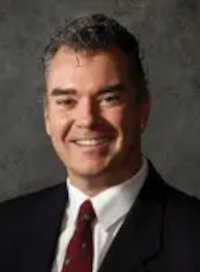Peace of Mind for Sale
SERIES: When Trouble Comes

Let’s face it, insurance is not exactly something you enjoy thinking about or paying for. It’s the only thing you invest in hoping you will never need it. In that regard, it can seem like money down the drain… right up until you have to place a claim. That’s the moment when you find out exactly how good your insurance (and your claims administrator) is.
This article gives great detail about insurance coverage a business owner should have. You might want to get out your policy and compare it to the information here. If you take time to get the right insurance in the first place, you’ll know it’s solid before you have to stand on it. How sure are you about yours?
We spoke to Bruce Boivin of Desjardins Insurance about what insurance a typical dry cleaner or laundry needs to be sure they are both covered and secure.


Bruce Boivin, Owner/Agent
Bruce Boivin Insurance & Financial Services, Inc.,
DBA Desjardins Insurance
Phone 519-376-3772
Email bruce@boivininsurance.com
Writes policies in Ontario, has affiliates in Nova Scotia and Alberta.
Member, Canadian Fabricare Association
About Bruce
Bruce opened his insurance agency in 2009. He remembers how it all started.
“As a business owner at that time, I was fascinated by insurance. As a result, I explored the opportunity of becoming an agent. After a strict and lengthy selection process (with State Farm at that time), I opened my insurance agency on August 1st, 2009. Later, I became a Desjardins Agent with the acquisition of State Farm by Desjardins. Since then, I have helped thousands of clients protect their businesses, assets, and families.”
What are the top three things you think any operator should know/consider about insurance for their business?
For small business owners, like dry cleaners, their company means everything to them. An event like a fire or a lawsuit can cause significant financial distress for them and their families for many years. An insurance policy is there to help them recover quickly. Therefore, a policy tailored to their needs is vital, and the price should not be the determining factor when choosing a policy.
It’s crucial to work with an agent who is well versed in commercial insurance to find the best solution. Clients should ensure they get the proper coverages and limits.
Here are three key things to look for:
- Sufficient Coverages and Limits: Ensure the policy includes at least the minimum coverages specific to their activity and that the insurance reflects the true replacement costs.
- Experienced Agent: Work with an agent or team member trained in commercial risks.
- Value Over Price: Understand that the cheapest premium does not guarantee proper coverages, limits, and claims expertise.
What kinds of insurance should any business owner in our industry have, both business and personal?

The most common policies are of the “All Risks” type. These policies provide basic coverages tailored to protect the building (if the client owns the building where they operate their business), the contents, and many other specific coverages such as sewer backup, flood, contents at a temporary location, business interruption, crime, equipment breakdown, and more.
Additionally, each business category may require extra coverages. For example, dry cleaners need bailee coverage.
EXAMPLE — Bailee coverage protects businesses that temporarily hold or work on customer property, such as dry cleaners, jewellers, repair shops, or restaurants with valet services. Desjardins covers “the property of others” as contents, eliminating the need for a bailee endorsement. Bailee losses are covered at actual cash value rather than replacement cost.
Some competitors exclude bailee coverage from the All-Risks policy and require it to be added by endorsement. If the insurance representative is not well versed in commercial insurance, they may fail to add it, leaving the client uncovered. Some insurers, like us, include bailee coverage in the policy wording, so the client does not need to add an endorsement or pay an extra premium.
Close attention must be paid to the coverage limits for both property (building and contents) and liability.
Specifically for dry cleaners, I would recommend:
- An All-Risks type policy with replacement cost coverage for their building and contents, with adequate limits (accurate replacement cost values) to avoid being affected by the co-insurance clause. The majority of insurers have the clause, we don’t have it.
EXAMPLE — Coinsurance is a penalty imposed on the insured by the insurance carrier for under-reporting/declaring/insuring the value of tangible property or business income. The penalty is based on a percentage stated within the policy and the amount under-reported.
For instance: A dry-cleaning building with a true replacement cost of $1,000,000 is insured for only $700,000, with a $5,000 deductible. The policy includes a co-insurance clause at 90%. Since the insured value is less than 90% of the true replacement cost ($1,000,000 x 90% = $900,000 > $700,000), the co-insurance clause will apply. This clause applies to both partial and total losses, as well as to the building and its contents. In this example, the co-insurance factor is 70% ($700,000 * 100 / $1,000,000).
Total Loss Scenario: Due to a fire, the property is completely destroyed. The owner needs $1,000,000 to rebuild but expects to receive $700,000. In reality, the owner will receive only $485,000 ($700,000 insured amount x 70% co-insurance factor – $5,000 deductible). The owner will need to cover the remaining $515,000 out of pocket.
Partial Loss Scenario: Due to water damage, the property incurs $300,000 in repair costs. The owner expects to receive $300,000. However, the owner will receive only $205,000 ($300,000 insured amount x 70% co-insurance factor – $5,000 deductible). The owner will need to cover the remaining $95,000 out of pocket.
- Ensuring that the bailee extension is provided (either included in the basic policy or by endorsement).
- In addition to adequate limits for general liability coverage, ensuring that their policy provides limited pollution coverage.
EXAMPLE — Pollution coverage protects against damage or injury resulting from the unexpected or unintentional spill, discharge, emission, dispersal, seepage, leakage, migration, release, or escape of pollutants. It applies when bodily injury or property damage occurs due to a spill at the insured premises. There are conditions and limitations to the coverage; for example, the loss must be reported within a specified time frame from detecting the spill.
- Reviewing the quote/policy to ensure the building is insured for the correct replacement cost and coverages.
- Including equipment breakdown coverage in their policy.
EXAMPLE — Equipment Breakdown Coverage covers the breakdown or impairment of electronic circuitry occurring during the policy period to insured equipment while in use or connected and ready for use at the insured premises. This could include boilers, dry cleaning machines, and similar equipment. The coverage is complex and can extend to contents or provide business interruption coverage. There are conditions and limitations, such as the condition and maintenance of the equipment, wear and tear, and other factors.

- Discussing with the agent the coverages for their home and auto, ensuring that any commercial exposure is properly covered (for proper coverages, exposure, and potentially for tax purposes).
- Discussing with the agent whether they need a buy/sell agreement (which goes hand in hand with life and living benefits coverages) in a partnership agreement. Agents are independent business owners and understand the needs of small business owners, not only to protect their business but also their family and assets.
A buy-sell agreement is activated by events such as death, disability or critical illness. This insurance provides the remaining partners with the financial resources to purchase the departing partner’s share, ensuring the business’s control and stability at a pre-agreed price.
EXAMPLE — Brad and Rob own a successful dry-cleaning business valued at $2,000,000. When Brad suffers a heart attack and passes away, or is diagnosed with cancer and given three months to live, Rob’s new partner becomes Brad’s wife, with whom he does not have a good relationship. A buy-sell agreement would have provided Brad’s wife with $1,000,000 for her husband’s share of the business, allowing Rob to become the sole owner of the dry-cleaning business.
- Considering the recent increase in data compromise and cyber attacks, cyber coverages are a necessity. An agent can explain the risks, coverages, and options.
EXAMPLE — You come in one day, boot up the computers and are hit with a black screen and a message on it saying someone has taken control of your system, and demanding “ransom” to allow you back in. If you have the right insurance, that ransom amount will be taken care of immediately.
How well do you think most companies are insured?

Some business owners have inadequate limits and coverages. We often see this with clients who move their coverage to our office. Some insurance representatives are not well versed in commercial risks, resulting in policies that lack proper limits (true replacement costs for buildings and contents), bailee coverage, adequate liability limits, and pollution coverages.
Clients should work closely with their agent to find the best coverages, ensuring they have the proper limits and the best premium to cover their risks.
Are insurance requirements different in the various provinces, or is this something that is universal across Canada?
Insurance is provincially regulated, which results in differences from one province to another. Although commercial insurance is also regulated, each insurance company sets up its own policy wording, leading to some or even substantial differences in coverages between insurers. This is not the case for auto insurance, as it is heavily regulated by provincial governments, and the policy wordings are identical.

Final thoughts
Clients should remember that agents are their allies and work on their behalf. One of the most important things is to be transparent; be open and honest. Providing all the information up front and not withholding any details helps the agent find the best solution for the client in terms of coverages, limits, and price. Moreover, this transparency will make the claims process smoother and faster.






